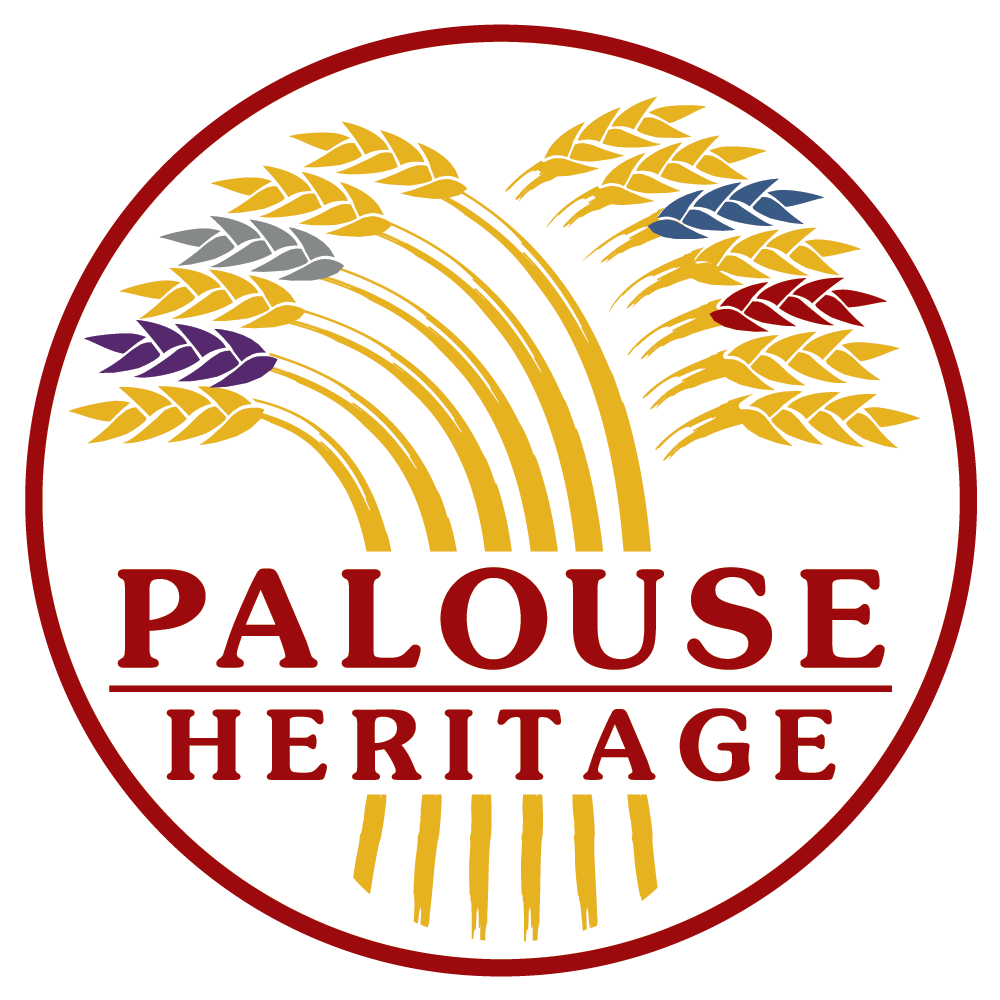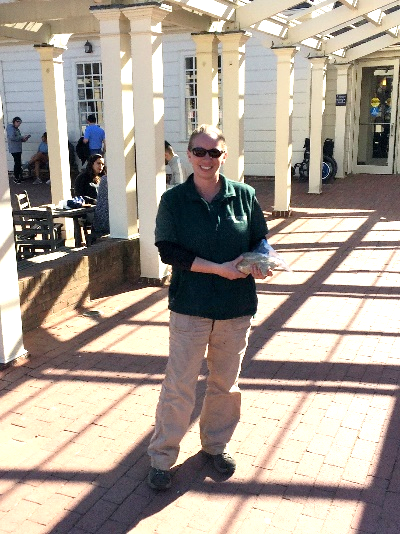This past week we commenced our 2017 Palouse Country heritage grains harvest by working with our longtime friends Joe and Sara Delong at their incredibly beautiful and historic if somewhat remote ranch along the Palouse River about five miles upstream from our Palouse Colony Farm. The Delongs have partnered with us to raise landrace Sonoran Gold wheat, Purple Egyptian barley, and other heritage grains and this past week it was time to commence the annual harvest.
The Delong ranch is well known in our region as the oldest farm in the county and also has the special distinction of being the one continuously owned longer than any other family around. Joe’s frontiersman ancestor, Indiana native Joseph Delong, drove a team of oxen over the Oregon Trail in 1862 and eventually settled in 1869 on the Palouse River where the family farm is now located at the end of long gravel road. I think Great Great Uncle Joe would be proud of his 21st century namesake since he and Sara have worked long hours for many years to be good stewards of the land where they continue to raise grain and livestock in one of the most beautiful parts of the country. Joe is a master mechanic who can keep equipment of any vintage running forever, and in the shadow of immense and rugged basaltic bluffs they share the landscape with deer, golden eagles, and occasionally errant moose and elk.
Palouse Heritage Red Russian Wheat; Delong Palouse River Ranch
I’ve known the Delong family most of my life since they farmed just a few miles from where I was raised. Back in 1980 I interviewed Joe’s father, Ray, who was not only proud of his pioneering past but had also preserved many priceless documents handed down since the farm had been established decades earlier. The journals and account books kept by Joseph, Sr. provide a rare glimpse of life on the Palouse frontier during its earliest years of settlement. The records reveal the kind of self-sufficiency rarely known in our day as he tended a considerable orchard and established a packing house as well as raised grain and livestock. He also established the first store in the vicinity to supply farm families who came later and travelers who passed by on the historic Kentuck Trail.
Joe, Sr.’s journal entries from the late 1800s record information essential to pioneer life under such scribbled headlines as "Smallpox Cure," a concoction of sugar, foxtail, and zinc sulfate, "Recipe for Preserving Green Fruit," and "Grasshopper Poison." Related knowledge of value clipped from early issues of the Walla Walla Statesman and Palouse Gazette was safeguarded between the small, lined pages of his hardboard bound books providing the mathematical formula "To Measure Hay in Ricks," stories about Lincoln and Grant, and favored verse: "Let live forever grow, and banish wrath and strife; So shall we witness here below, the joys of social life." Perhaps to advance social relations with the travelers and neighbors who frequented his place, DeLong also found time to jot down riddles. One favorite of this thinly bearded soul with kindly mien was in rhyme: "I went to walk through a field of wheat, and there found something good to eat. It was neither fat, lean or bone, I kept it till it ran home. (An egg!)”
Pioneer Joe Delong and Colt (c. 1900); Courtesy of Joe and Sara Delong
Apples from the Delong Orchard
Most folks with whom DeLong most often shared such wit and practical knowledge were families of those who later settled near him on the pine covered slopes of the Palouse River Valley. Names frequently appearing in his account books include Ben Davis, Frank Smith, Steve Cutler, Link Ballaine, and E. E. Huntley. These families came to DeLong's store to visit, collect mail, and procure staples, often on credit. DeLong's inventory included eggs, onions, coffee, sugar, and baking powder; soap, sarsaparilla, and tobacco. He also stocked hardware supplies like nails and wire, and such curatives as oil of anise, oil of bergamot, and sulfuric of ether. DeLong and his neighbors spent considerable time building and repairing split rail fences to hold in their livestock, and also experimented with a variety of grains and fruits to determine those best suited to the region’s soils and climate. Joseph also planted hundreds of apple trees that he obtained from Walla Walla nurseries as well as pear, cherry, plum, prune stock, grape vines, and currant bushes. Summer visitors to his store could always expect a good supply of Tall Pippins, Yellow Bells, and Northern Spy as well as soft fruit and vegetables which he sometimes traded for salmon with Indians who seasonally passed along the old trails along the river.
Harvesting Palouse Heritage Scots Bere Barley at Delong’s
Thanks to Joe and Sara’s regard for heritage and health, we were able to complete harvest this past week of our Sonoran Gold soft white and Red Russian soft red wheats which we will soon be transforming into flavorful all-purpose flours. We had a few breakdowns but we’ve come to believe there’s nothing made of metal that Joe can’t repair in short order. Brother Don, nephew Andrew, and I took turns driving truck while Joe did the hard work on top of the combine—a 1959 McCormick combine that hasn’t missed a harvest since 1959! Perhaps the company should send him a new one, though at $650,000 that’s probably not likely. As we were finishing up in a corner of the field I noticed a row of old plum trees along a fence line loaded with dark red fruit. So on my next trip to town I returned with a bucket to retrieve some for Grandma and returned with enough to keep us all in jam and sauce until next year.























































